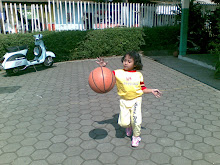Expression Cloning
One of the most basic techniques of molecular biology to study protein function is expression cloning. In this technique, DNA coding for a protein of interest is cloned (using PCR and/or restriction enzymes) into a plasmid (known as an expression vector). This plasmid may have special promoter elements to drive production of the protein of interest, and may also have antibiotic resistance markers to help follow the plasmid.
This plasmid can be inserted into either bacterial or animal cells. Introducing DNA into bacterial cells can be done by transformation (via uptake of naked DNA), conjugation (via cell-cell contact) or by transduction (via viral vector). Introducing DNA into eukaryotic cells, such as animal cells, by physical or chemical means is called transfection. Several different transfection techniques are available, such as calcium phosphate transfection,electroporation, microinjection and liposome transfection. DNA can also be introduced into eukaryotic cells using viruses or bacteria as carriers, the latter is sometimes called bactofection and in particular uses Agrobacterium tumefaciens. The plasmid may be integrated into the genome, resulting in a stable transfection, or may remain independent of the genome, called transient transfection.
In either case, DNA coding for a protein of interest is now inside a cell, and the protein can now be expressed. A variety of systems, such as inducible promoters and specific cell-signaling factors, are available to help express the protein of interest at high levels. Large quantities of a protein can then be extracted from the bacterial or eukaryotic cell. The protein can be tested for enzymatic activity under a variety of situations, the protein may be crystallized so its tertiary structure can be studied, or, in the pharmaceutical industry, the activity of new drugs against the protein can be studied.






